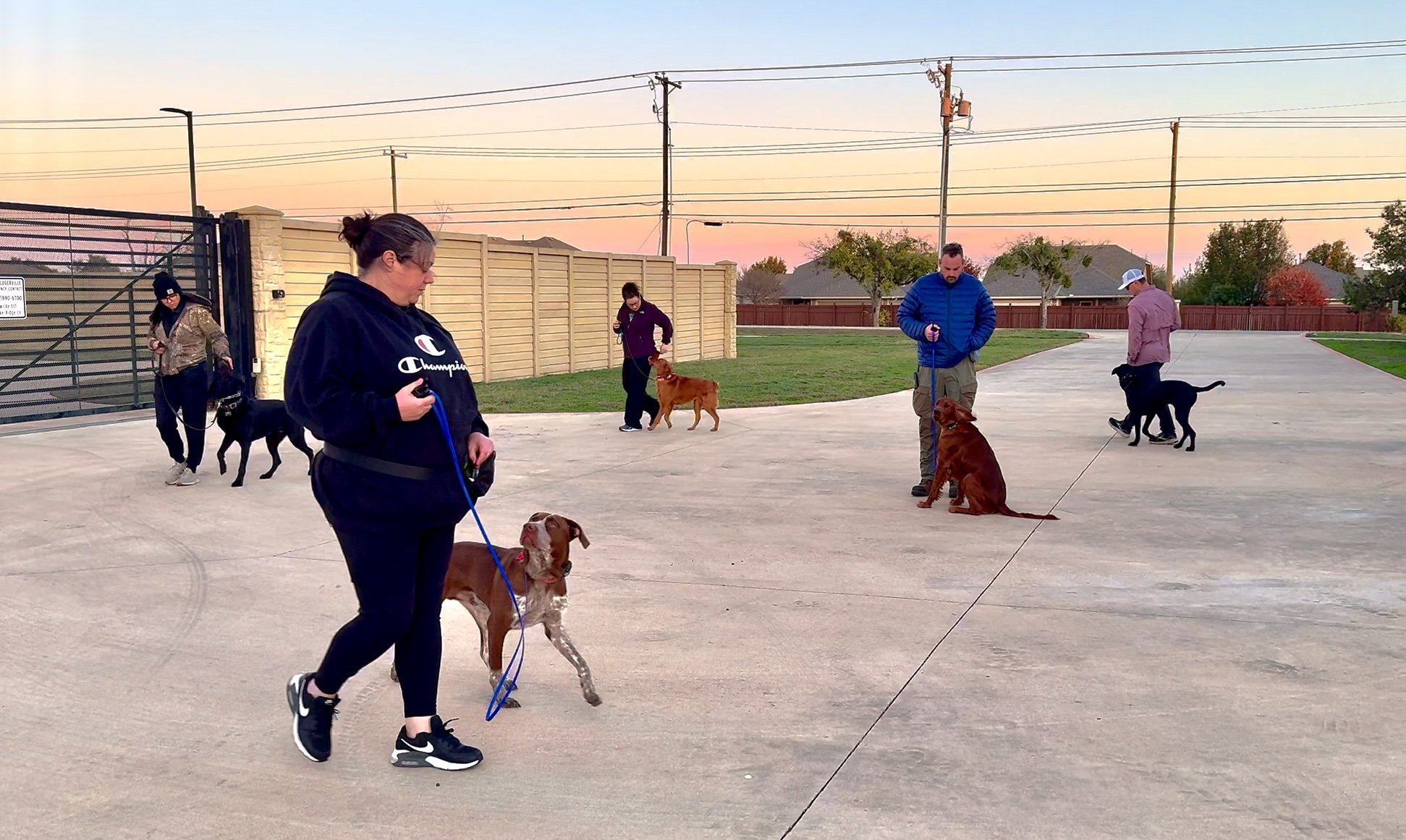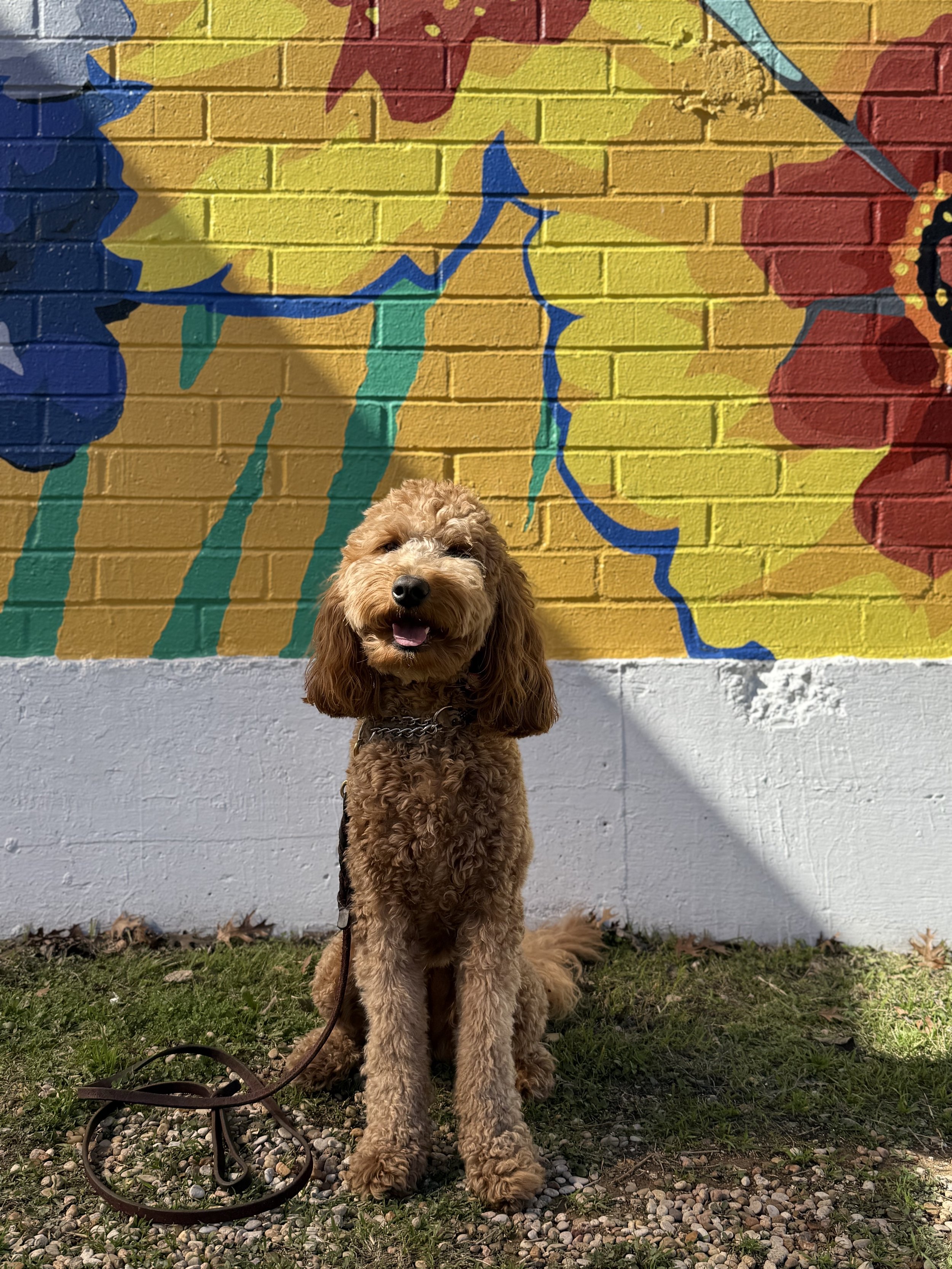How to Stop Your Dog from Pulling on the Leash: A Trainer’s Guide
Struggling with leash pulling? Here’s how to fix it.
Leash pulling is one of the most common frustrations dog owners face. Whether you’re walking through the streets of Pflugerville, TX, or hiking a scenic trail, a dog that constantly pulls can make the experience stressful instead of enjoyable.
At The Composed Canine, we specialize in loose-leash walking and off-leash reliability, helping dogs and their owners enjoy stress-free walks. In this blog, we’ll break down why dogs pull on the leash and how to teach them to walk politely by your side.
Why Do Dogs Pull on the Leash?
Before fixing leash pulling, it’s important to understand why it happens:
✔ Excitement & Overstimulation – Dogs naturally move faster than humans and want to explore their environment.
✔ Lack of Training – Without proper guidance, dogs don’t understand that pulling makes the walk unpleasant.
✔ Reinforcement of Bad Habits – If pulling gets them where they want to go, they’ll keep doing it.
5 Steps to Teach Loose-Leash Walking
1. Choose the Right Equipment
Using the right tools makes training easier. At The Composed Canine, we often recommend:
✔ A well-fitted collar or training tool appropriate for your dog’s size and behavior.
✔ A standard 6-foot leash (avoid retractable leashes, which encourage pulling).
2. Reward Attention & Engagement
Before even stepping outside, practice engagement exercises indoors.
• Hold the leash loosely and reward your dog for looking at you.
• Practice walking a few steps inside while reinforcing eye contact.
• Use high-value treats or praise when your dog stays by your side.
3. Teach “Pressure & Release”
Dogs naturally respond to pressure by oposing leash pressure: if the leash is tight, they naturally want to push against it. When they pull, walk the other direction.
• The moment they stop pulling, reward and start walking again.
• Over time, your dog learns that pulling means no forward movement while a loose leash means they get to walk.
We want to teach them how to walk before walking
4. Change Direction Frequently
If your dog starts pulling ahead:
• Change direction suddenly and encourage them to follow.
• This teaches them that paying attention to you is more important than pulling ahead.
5. Stay Consistent & Practice in Different Environments
Once your dog walks nicely in a quiet setting, increase the difficulty by adding distractions.
• Practice in your yard, then on a sidewalk, then in busier areas of Pflugerville.
• Gradually work toward real-world reliability with distractions like other dogs, cars, and people.
Common Mistakes to Avoid
🚫 Using tension on the leash constantly – Your dog should learn to walk without needing constant pressure.
🚫 Letting your dog pull sometimes – If pulling works even once, they’ll keep trying.
🚫 Only training in one environment – Dogs need practice in various locations to generalize their behavior.
Need Help? Work with a Professional Dog Trainer in Pflugerville, TX
At The Composed Canine, we specialize in loose-leash walking and off-leash reliability, giving owners the tools they need to enjoy walking their dogs again. Whether you’re struggling with pulling, reactivity, or obedience, we can help!
📍 Located in Pflugerville, TX – serving Austin, Round Rock, and surrounding areas.
📆 Book a consultation today and start enjoying stress-free walks with your dog!









